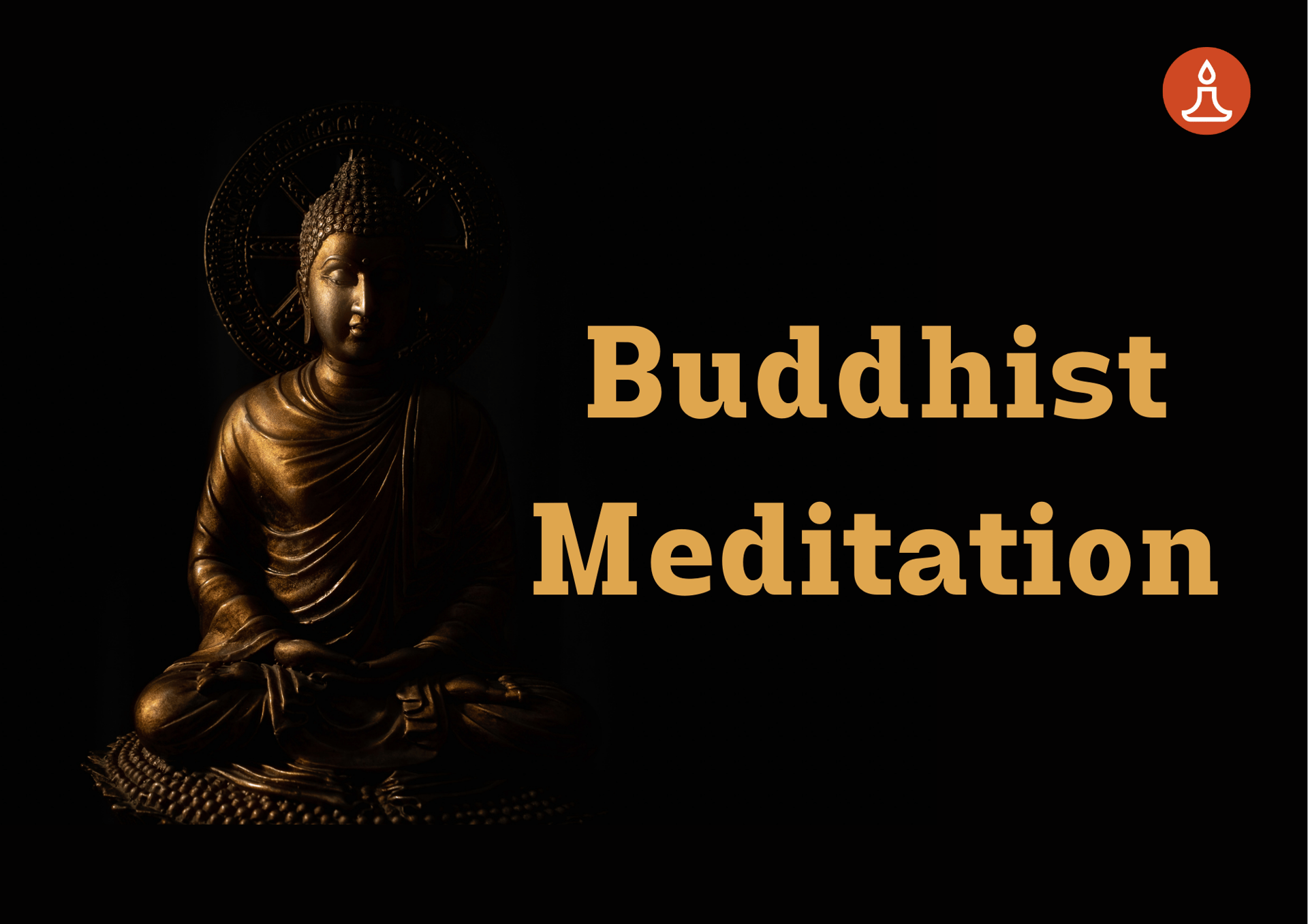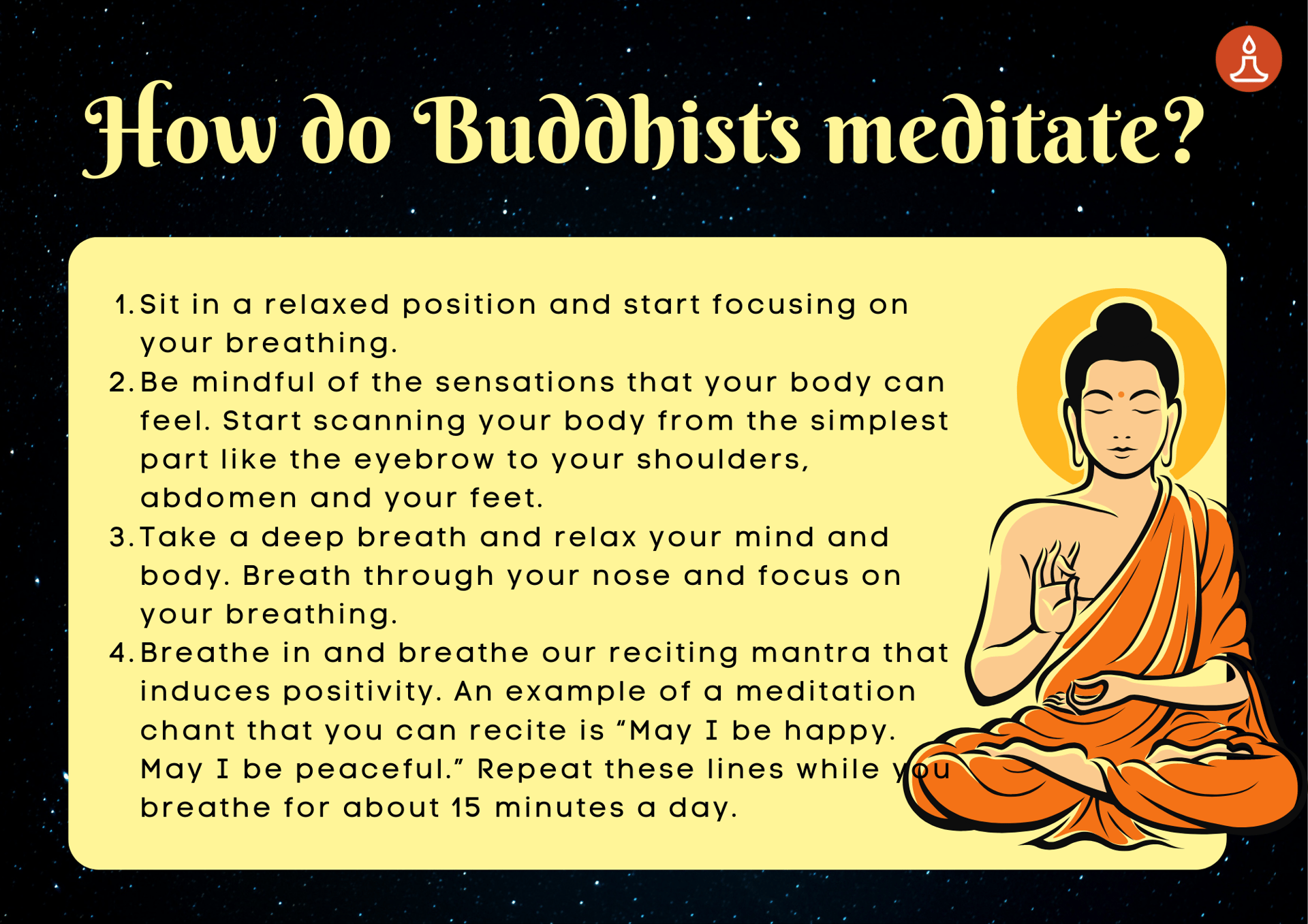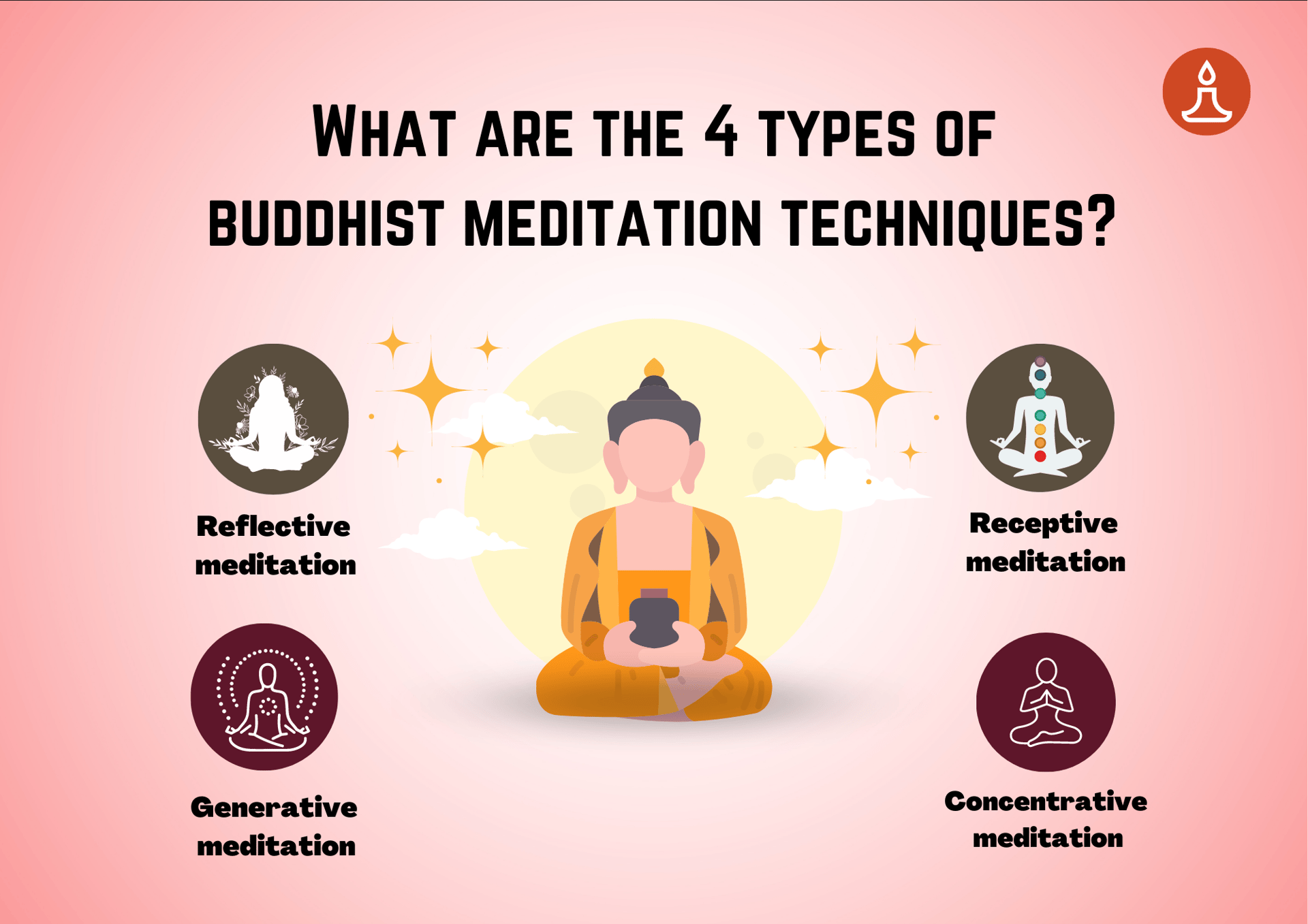Meditation, Spiritual
The Art of Buddhist Meditation for Deeper Inner Peace
Meditation is a common practice that aims to create a calm and peaceful state of mind. A simple breathing exercise in a quiet room or listening to music is already considered a meditation practice. Not all meditations are the same. While some meditation focuses on clearing the mind, another is on being in the present. But if you want a deeper level of inner peace, try Buddhist meditation. What is it and what makes Buddhist meditation different from any other meditation technique?

What is Buddhist Meditation?
Buddhist meditation is a meditation practice that involves both the body and the mind. The aim of this practice is to make the mind and the body a single entity. Buddhists believe that a person is a result of their thoughts. So if cravings for material things consume your thoughts, you will never feel satisfaction. On a higher level, Buddhist meditation aims for spiritual freedom.
How do Buddhists meditate?
Even non-Buddhists can also practice Buddhist meditation. People who start doing meditation always believe that once they meditate, their minds and body will instantly be one and be at peace. But that is not the case. Meditation is a technique that takes consistent practice and discipline. This is no different from any Buddhist meditation practice. Successful Buddhist meditation practice often starts with a simple meditation exercise. Here is a simple loving-kindness meditation that you can practice.
- Sit in a relaxed position and start focusing on your breathing.
- Be mindful of the sensations that your body can feel. Start scanning your body from the simplest part like the eyebrow to your shoulders, abdomen and your feet.
- Take a deep breath and relax your mind and body. Breathe through your nose and focus on your breathing.
- Breathe in and breathe our reciting mantra that induces positivity. An example of a meditation chant that you can recite is “May I be happy. May I be peaceful?” Repeat these lines while you breathe for about 15 minutes a day.
This is a simple mindfulness meditation that can bring about kindness and a loving attitude and removes negative emotions.

What are the 4 types of Buddhist meditation techniques?
- Concentrative meditation
This form of meditation teaches a student to be calmer and more concentrated. You can use a simple object as a subject of your concentration. You can do this meditation using sounds by listening to a beat, or through visual images like the rotation of a ceiling fan or doing physical activities like walking meditation. The most common concentrative meditation is breathing exercises. This is the best meditation practice if you want to improve your focus.
- Generative meditation
This is a kind of Buddhist meditation technique that aims to develop or generate an effect. One example is the chanting meditation techniques that induce loving-kindness and open positivity. Generative meditation is not solely for the self. You can do a meditation wherein you think of another person, like a friend or a family member, to develop a metta (loving-kindness) towards them. You can send metta to the people that you don’t like. This is a way of extending kindness and compassion to everyone through meditation.
- Receptive meditation
Receptive meditation is being aware of whatever is happening around us. This form of mindfulness meditation allows a person to experience being fully immersed in whatever is happening around them. This opens the mind and the heart to be in the moment.
- Reflective meditation
Reflective meditation allows us to get a deeper understanding of things. It can be a deeper understanding of your personal thoughts. OR a deeper understanding of life lessons experienced by Buddha. This gives you more wisdom to understand things and to solve more complex problems calmly.

How do I start meditation in Buddhism?

People practice Buddhism as a religion and as a way of life. In Buddhism, meditation aims to make the mind and the body one. They believe that your thoughts reflect on your actions. Through meditation, you can connect with your true self. If you are yearning to still your mind and find your true self, you can start with a Buddhist meditation practice. One simple way is through loving-kindness meditation. Sit in a comfortable and quiet area in your room and start with a breathing exercise. Once you have gained focus on your breathing, recite the words “May I be happy. May I be peaceful? This is a very simple way to start your Buddhist meditation. Here are some practical tips to start your Buddhist meditation practice.
- Build a strong mental state
Doing a 15-minute meditation can build a strong mental focus. This is a good foundation for deeper and more complex meditation. Meditate regularly for 15 minutes and slowly increase the timing to build your mental fitness.
- Be mindful of your pain
When you meditate, you might feel a little discomfort. And that is very normal. The best that you can do is be aware of your pain and acknowledge it. This is when your mental fitness should come in. Physical pain during meditation is one obstacle that you need to succeed over to be able to overcome other sufferings.
- Acknowledge your negative thought.
When you meditate negative thoughts can still enter your mind. But instead of ignoring them, acknowledge them and then observe them. Observe your thoughts and slowly push them away. Let them know that they have no place in your mind and in your heart.
- Develop mindfulness through prevention, elimination, cultivation and maintenance.
Prevent negative thoughts from invading your peace of mind. This can also prevent any suffering that may arise from over-thinking and stressing out.
Eliminate the cause of your sadness and suffering. There is no point in holding on to things and to experiences that brings suffering and negative feelings.
Cultivate healthy and positive thoughts. Always think of compassion and kindness towards others. This way, you are not only helping yourself to become a positive person but you are also shedding light on other people.
Maintain your positivity towards yourself and towards others. Buddhist meditation is all about creating a kind environment for your mind and for your body.
What is the difference between meditation and Buddhist meditation?
While most meditation practices focus on bringing inner peace and calming the mind, Buddhist meditation is about bringing the mind and the body as a single entity. Buddhism believes that the mental state of our mind will dictate the kind of life that we live. If your mind is full of negativity, you will only focus on seeing the bad things that happen in your life. This will make you lose positivity and kindness.
What did the Buddha say about meditation?
If you look at the origins of Buddhism, you will know that the Buddha himself used meditation to attain enlightenment. It is very evident in Buddhism scripture how much importance Buddha gives to meditation as a way of enlightenment and acceptance. The Buddha believes that our actions are the manifestations of our thoughts.
“All that we are is the result of what we have thought; it is founded in our thought, it is made up of our thoughts.”
“He who is mentally concentrated sees things according to reality”
These are a few lines from the Buddhist scripture that tell show how important the thoughts are in a person’s actions and way of life. It has become first nature to Buddhism to be aware of their consciousness and to aim for enlightenment.
Frequently Asked Questions
What do you do if meditation seems impossible?
It is not uncommon to find yourself unable to focus during your meditation. Meditation is an exercise that needs discipline and constant practice. Even if meditation seems impossible, keep on doing the practice. You may not gain your aim of focusing your mind and body on your meditation session but you succeeded in making meditation part of your system.
What is the purpose of Buddhist meditation?
Most people practice Buddhist meditation to create unison between the mind and the body. It aims to create a more calm mental state that will reflect on your way of life.

